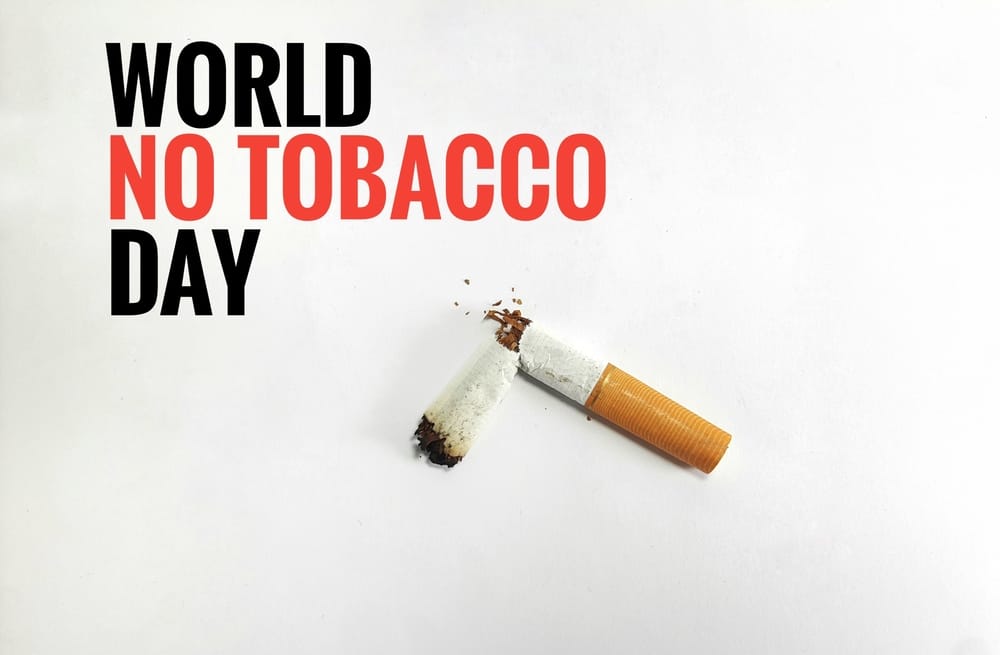May 31 is World No Tobacco Day
There was a time when smoking was very much a part of typical daily life. People smoked everywhere: in planes, ships, cinemas, offices and homes.
Smoking a cigarette, cigar, or pipe was considered ‘macho’. Film stars smoked away in movies as did models in advertisements. Anyone who was living in the 60s and 70s will remember the iconic ‘Marlboro Man’.
For decades, the tobacco industry has employed aggressive and well-resourced strategies to attract youth to tobacco and nicotine products.
All this began to change in the early 2000s when the health hazards of tobacco were getting publicised, and governments and social agencies started getting into the act of discouraging tobacco intake.
Governments undoubtedly have benefited by earning revenues from the cultivation and sale of tobacco products. On the other hand, nations have also paid a heavy price in health care costs and loss of productivity due to tobacco consumption.
World No Tobacco Day
 The member states of the World Health Organisation (WHO) created the World No Tobacco Day in 1987. May 31 is observed as World No Tobacco Day (WNTD) every year. This annual event aims to inform the public on the dangers of tobacco use, the business practices of the tobacco industry, and the efforts of WHO in fighting this epidemic.
The member states of the World Health Organisation (WHO) created the World No Tobacco Day in 1987. May 31 is observed as World No Tobacco Day (WNTD) every year. This annual event aims to inform the public on the dangers of tobacco use, the business practices of the tobacco industry, and the efforts of WHO in fighting this epidemic.
Since then, the day has been met with both enthusiasm and resistance around the globe from governments, public health organisations, smokers, growers, and the tobacco industry.
Private and government agencies are doing their bit in helping smokers quit the habit. Advertising for tobacco products is now strictly regulated along with warning symbols and text on the packaging.
De-addiction therapists have specialised programs for those who wish to quit tobacco consumption.
Why is tobacco dangerous?
Tobacco is one of the most addictive and harmful drugs. It causes various diseases and health problems, some of which are:
- hearing loss
- blindness and night vision
- cavities in the mouth
- dry, grey skin – ‘smoker’s face’
- heart disease
- narrowed arteries and blood clots
- scarred lungs
- emphysema (lung disease)
- respiratory infections
- erectile dysfunction
- weakened immune system
Quitting may not be easy. Nicotine withdrawal may be uncomfortable, but that’s a small price to pay for a longer, healthier life!

Strategies to quit nicotine
There are several ways to help you quit if you find it challenging to do so on your own. You may contact a therapist who may help with a nicotine cessation program. Another way is to get onto NRT (Nicotine Replacement Therapy) program: chewing gum, lozenges or patches allow you to alleviate the cravings.
Vaping (or e-cigarettes) is touted by some as a safer alternative to smoking cigarettes, as it does not contain nicotine. However, despite all the hype, vaping is not good for you as it can damage your lungs. A recent study indicated that persons who use e-cigarettes have a 71 percent higher risk of stroke than nonusers.
But be prepared for some withdrawal symptoms, which may include irritability, sleep disturbances and appetite fluctuations. But nicotine withdrawal is short-lived; your sense of achievement is likely to overtake the cravings.
Enjoy new freedom!
 When you quit, you are not only going to feel but smell better (no tobacco stink!). Your relationships are going to improve. You are also going to save plenty of money – not buying cigarettes and incurring health care costs.
When you quit, you are not only going to feel but smell better (no tobacco stink!). Your relationships are going to improve. You are also going to save plenty of money – not buying cigarettes and incurring health care costs.
You are going to be less stressed – looking for smoking rooms at airports and frequently getting out of shops, houses and meetings to get your fix. You are also going to have healthier self-worth.
The joy of being tobacco-free is a not-be-missed experience. Enjoy!
We have worked with individuals for all types of addiction. If you feel you need to speak to one of our qualified counsellors, call us on 0800 140 4044 or message us via the contact form.



